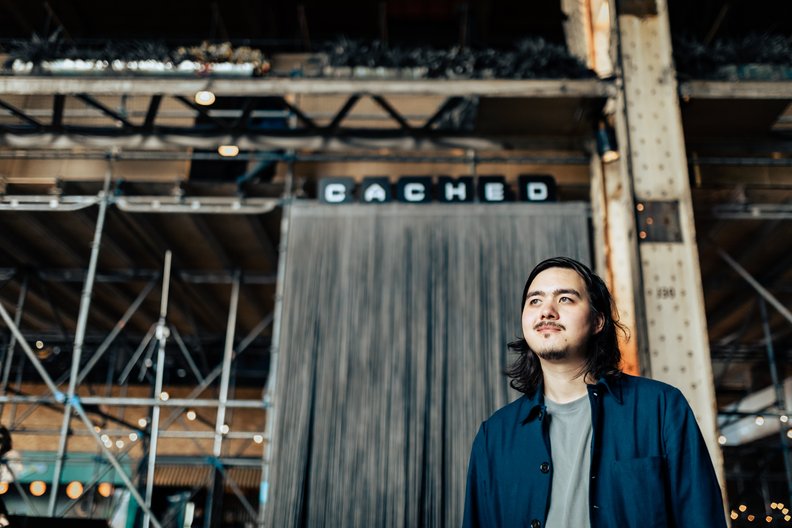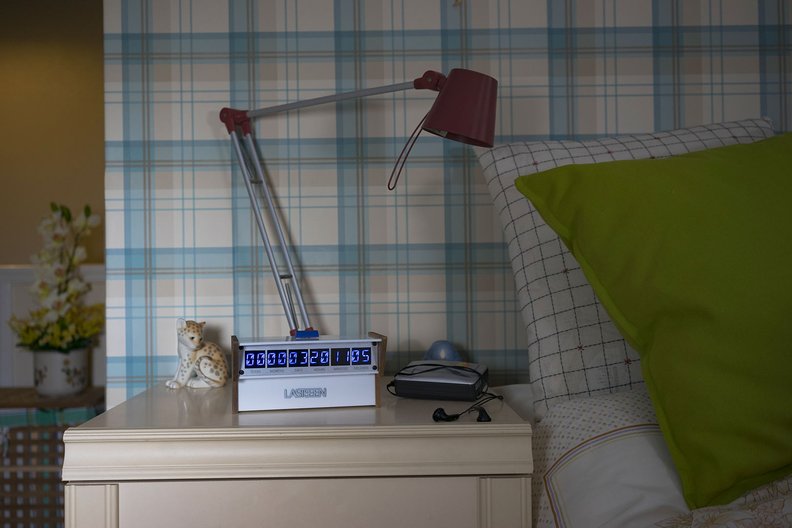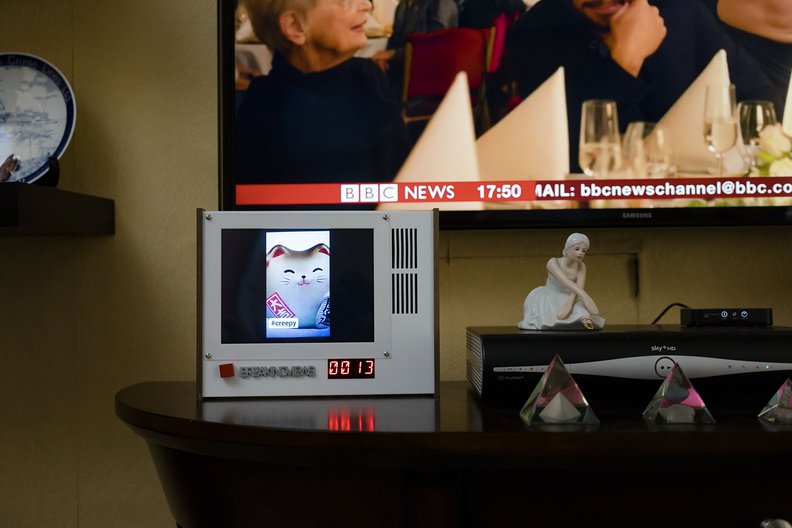3 September 2019
JON C FLINT IS ONE OF OUR CHOSEN 10x10 AND IS USING DESIGN AND PROTYPE TO TRANSLATE COMPLEX NEW TECHNOLIGIES INTO SIMPLE PHYSICAL FORM TO DRAW ATTENTION TO IMPACT AND CHANGES THEY HAVE MADE ON OUR LIVES.
Tell us about yourself or your practice.
I am Jon C Flint a designer and prototyper. As new technological products and services are increasingly becoming more and more complex. I am interested in dissecting this complexity and distilling it into simple and unique physical form. I like to reimagine our present in completely novel ways and see how people respond. The devices I create are grounded in the domestic space, often the first port of call for new technologies to impact our lives. These have manifested as: IoT appliances, mirrors, salesman suitcases, workshops, and even rooms from the future.
I work on projects as VJF with Vytas Jankauskas. We investigate how emerging technologies inhabit and shape our domestic mundane. And I am a member of the Cached Collective formed at the Hive residency in Provence, France. Our first project Cached, is a personalised experience that offers a glimpse of your digital self, revealing how your online activity is interpreted by contemporary social media algorithms.
What are you working on at the moment?
My desk is very messy at the moment, as I am getting some work ready for events in London this September at the V&A Digital Design Weekend, and the Tate Exchange.
As well as looking for new collaborations. Lately I am interested in exploring themes around ‘Technological Convenience’. Inspired by the last time I visited China hearing about the e-commerce boom, and ‘Taobao Villages’ phenomenon. And of course more ideas that incorporate social media algorithms in engaging ways.
But recently a lot of frustratingly applying for open calls and funding for new projects. Unfortunately these days it seems I spend more time than I would like on this, with not so much luck!
What key issues are you addressing with your work? / What impact do you hope to see through your work? / Why is design important?
Our projects encourage people to unpack the concept of the technological blackbox. And understand how specific technologies currently shape their lives. This is why we go through the effort of making and designing working prototypes and experiences. This way people can grasp for themselves, how technological services might be changing their behaviour. As well as get a better insight around what they sign up for. As well as understand the hype and limitations of new innovations.
The narrative of design is constantly changing, as designers rethink why design is important. An example could be seen in the legacy of Speculative and Critical Design (SCD). How that influenced a wave of designers to questions the norm (often through thought provoking work), rather than create more problems than they could solve. But the days to speculate so far into the future are limited when the emergencies are happening now. Design is important and can be used as a powerful tool to cut through all the noise and complexities of the techno-social world, into something tangible, meaningful and understandable for all.
Tell us about something you’ve seen that’s inspired you recently and about something you’ve worked on that’s made you feel proud.
Apart from the food and culture in all the places I visited this year to present work. I met some inspiring folks and saw some great projects at the ISEA symposium in Gwangju, South Korea. Such as Algorithmic Portrait Artists and Art Vending Machines. To an artist using wearable patches as a powerful tool for activism. And various amazing installations and performances.
I am surprised that we have managed to show our recent project Cached in so many places. This is in some ways thanks to the support of the Hive residency where Cached was created. We have seen all sorts of reactions from shock to amazement, when people have tried the Cached experience. And it has been rewarding to be there to discuss and engage with people about their experience. As well as raise awareness around the repercussions of their online presence.
What are the challenges you face in communicating your work to a global audience?
The main challenge is making sure everything works and functions. As our projects use live data and platforms, and with ‘data laws’ being different globally you can’t always predict what might happen. It is also quite intriguing to see how an audience understands and reacts to your work. In some cases some audiences understand and questions things through a technical perspective. But on some occasions the philosophical and conceptual aspect might also be raised. Technology is so universal that people still understand the issues we are raising.
We adapt our work into other formats to suit the requirements of different audiences. Since our project Cached would not be able to work in some places, we reformatted this into a two part workshop and talk. We have even built in pre-made experiences into our project Cached, so if you don't have Twitter or Facebook, you can still try it. Also you have to be mindful and respect people's privacy when it comes to their personal data. So with projects like Cached we comply with GDPR practises even when we are in a country that does not.
We want as many people as possible to understand our projects. So we use everyday tropes and familiar domestic items as tools to explain complex topics. For 'Somestic Media' we integrated social media functions into devices like an alarm clock or radio. To better show how social media is changing our perceptions of time, distance, and priority.
Category
British Council Project


